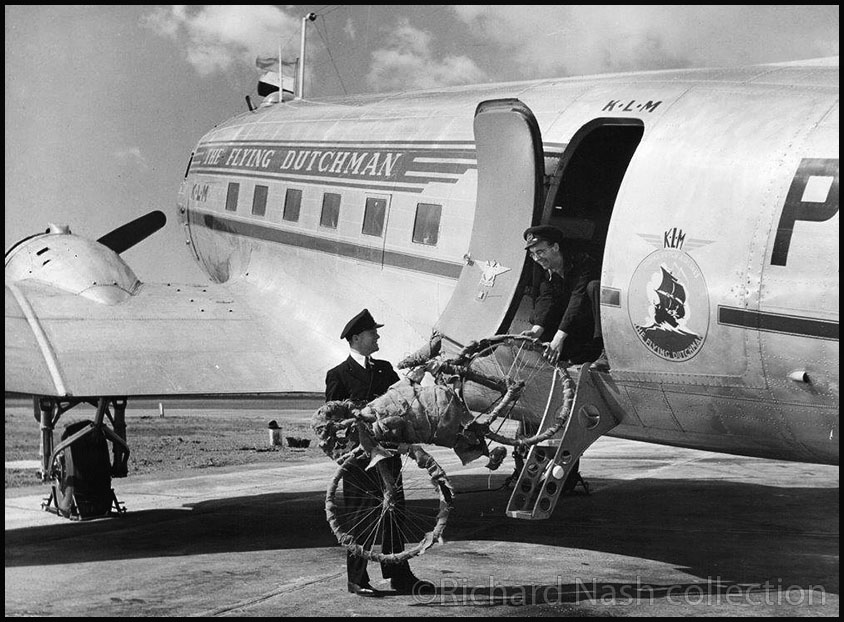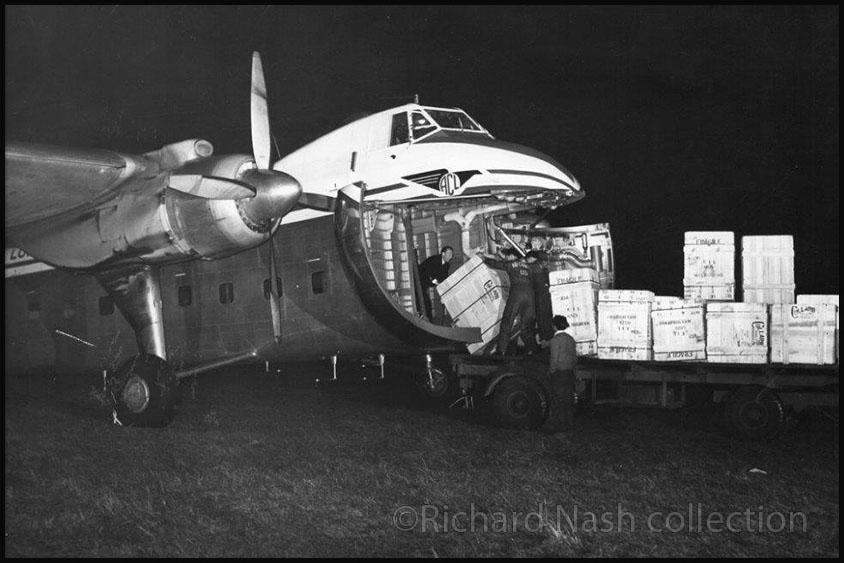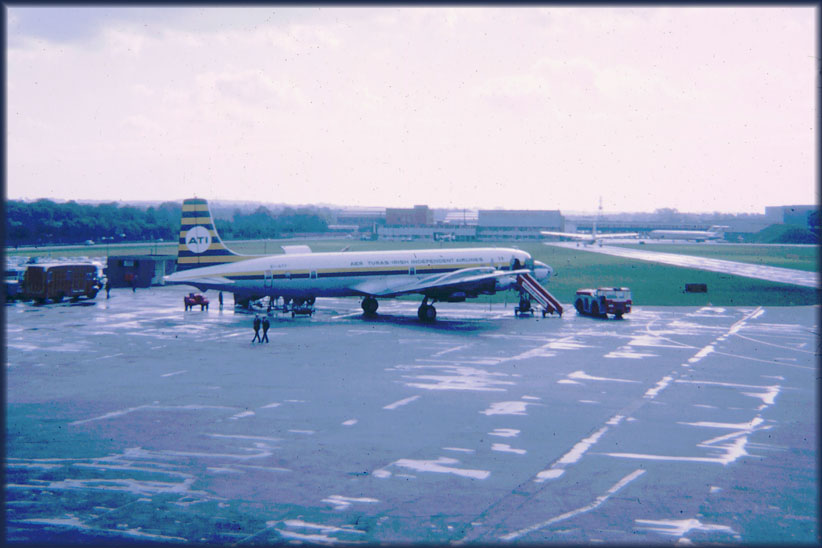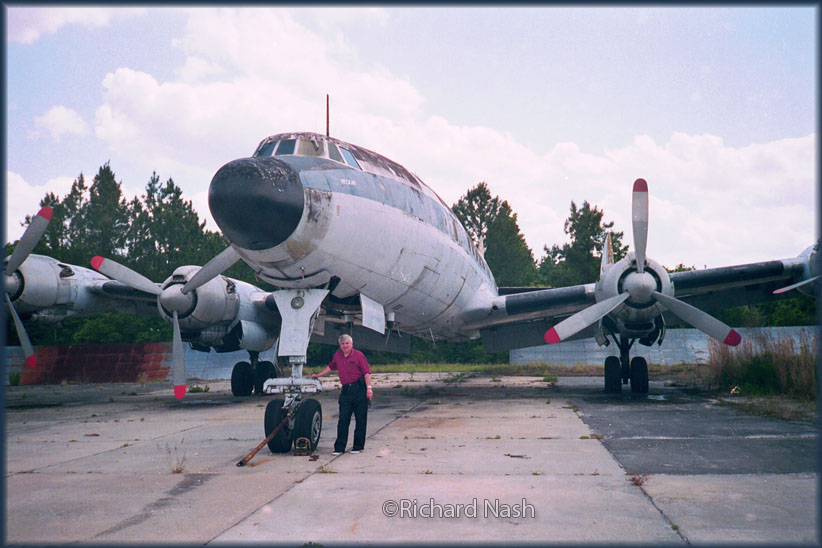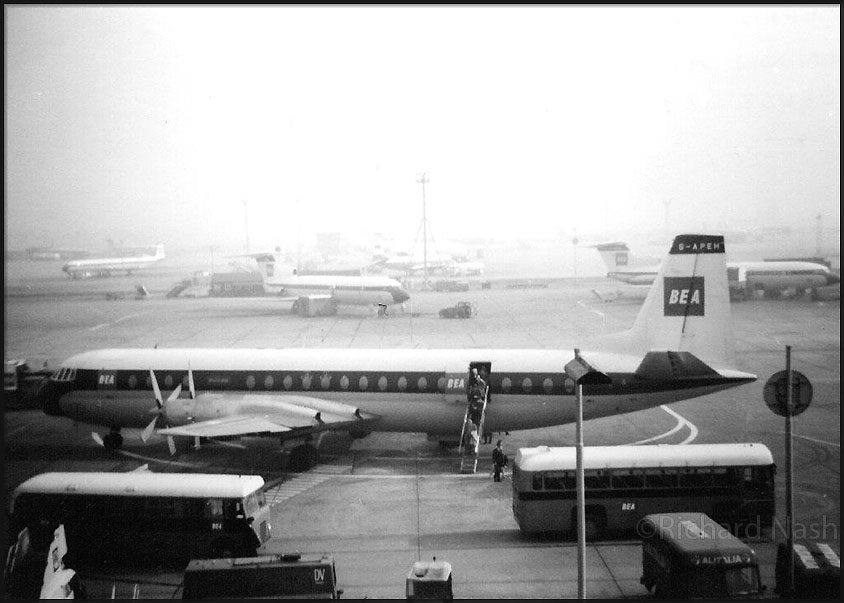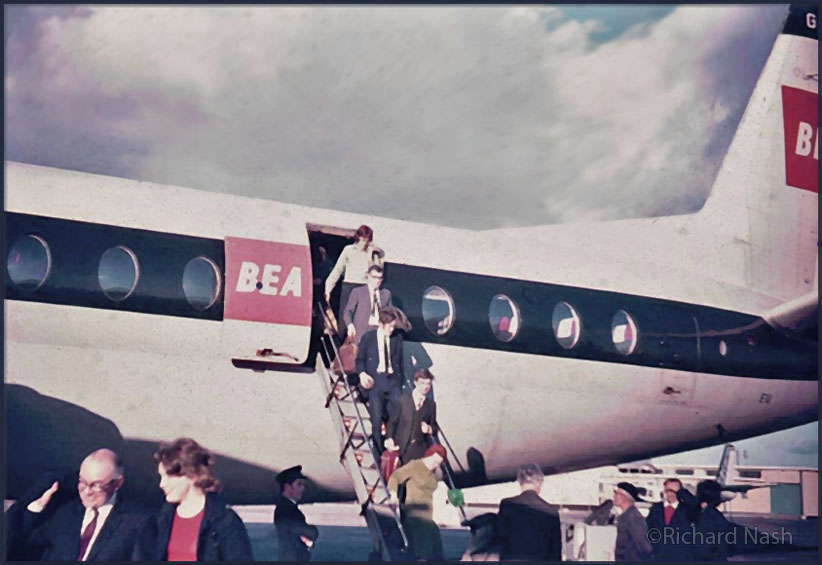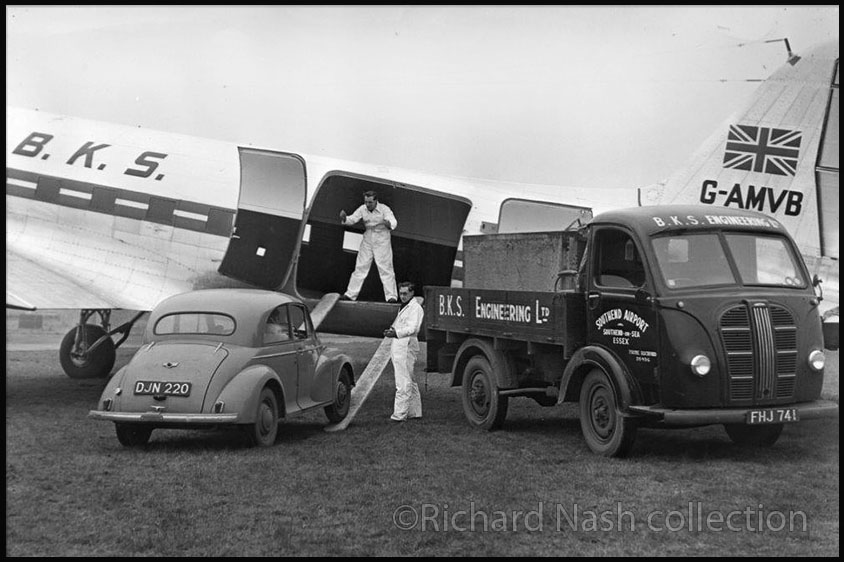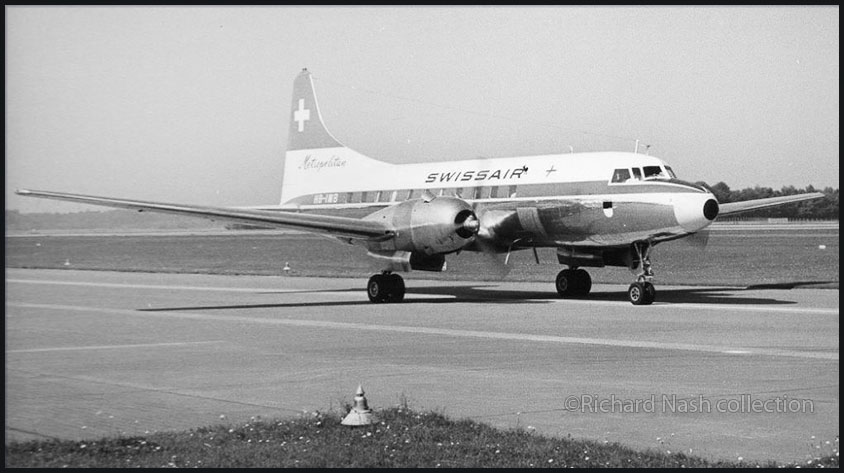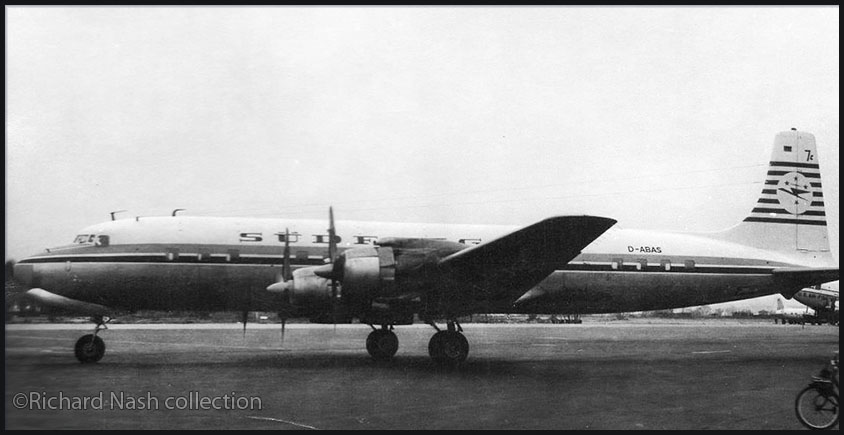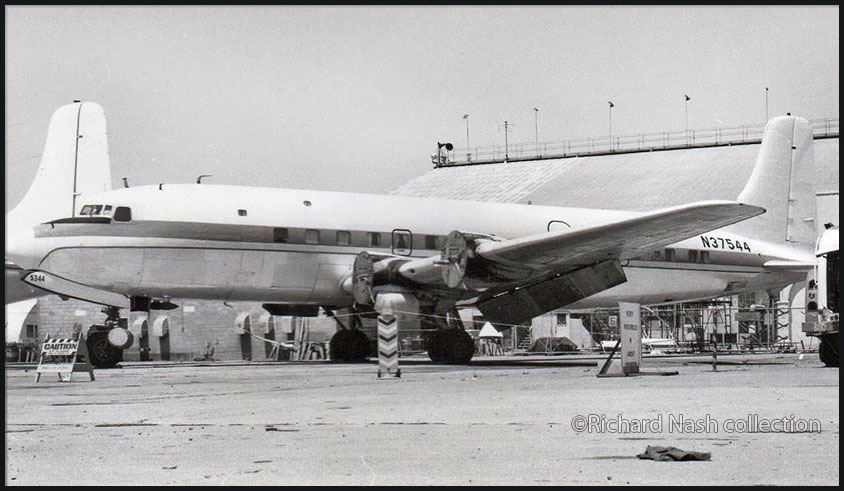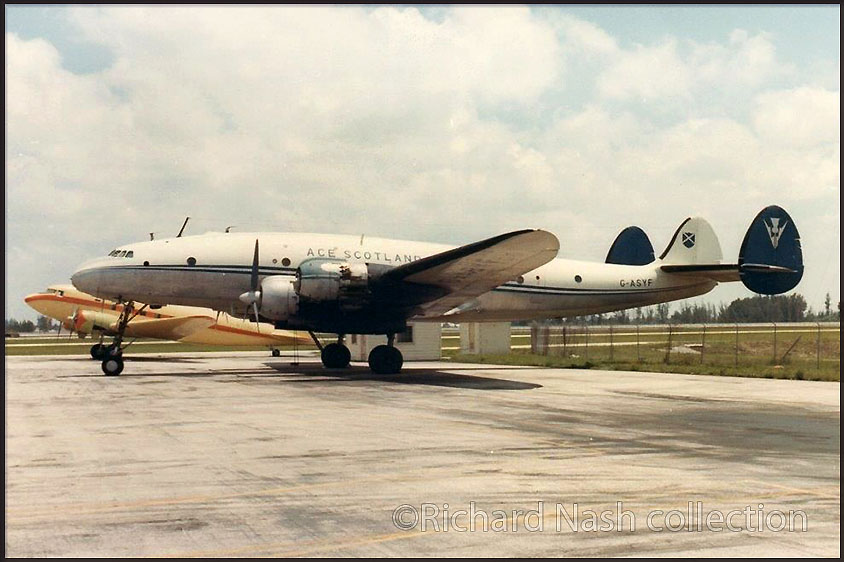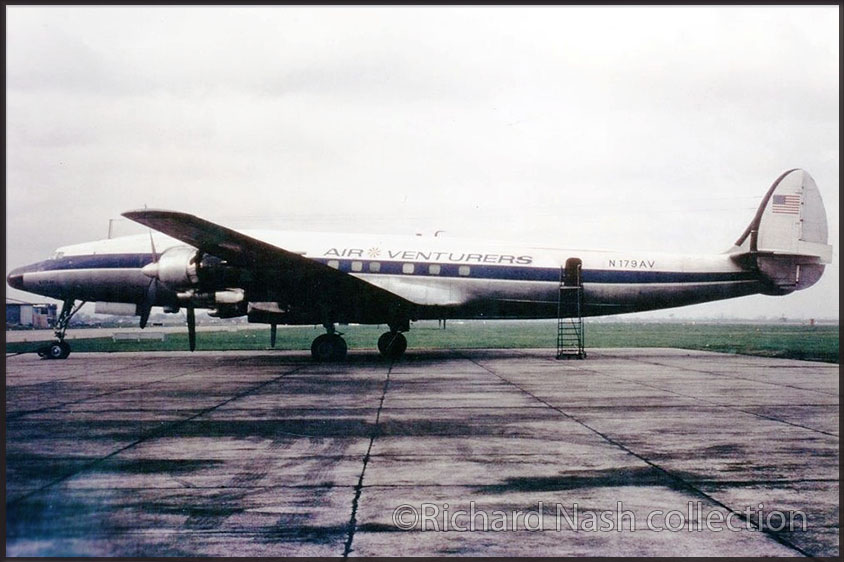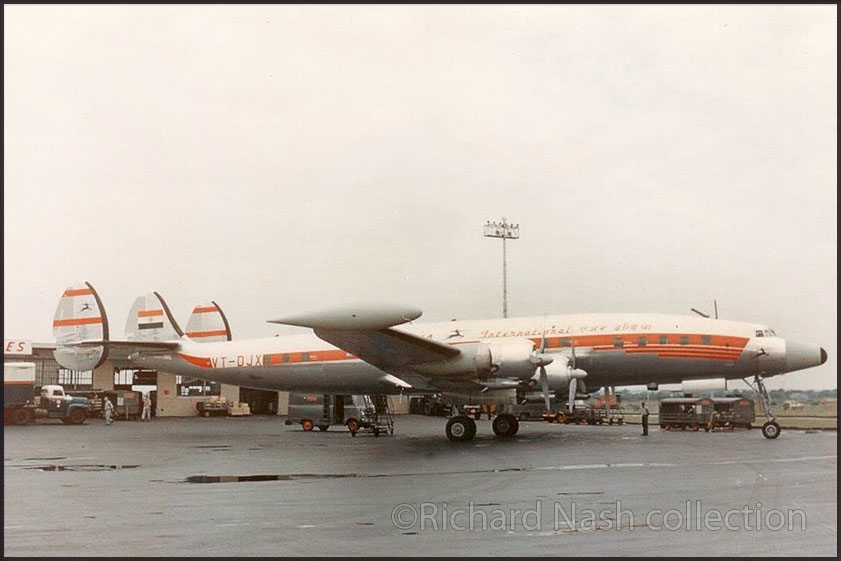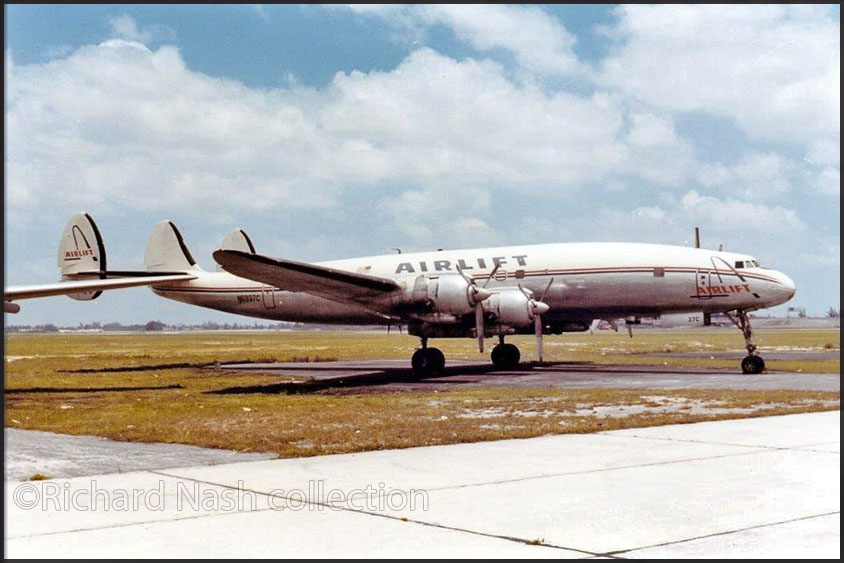
The Avro Tudor must have apperaed humongous in those days, the 1950s.
This York must be G-AKCD, as depicted below
Avro's Type 688 Tudor was a British piston-engined airliner based on their four-engine Lincoln bomber, itself a descendant of the famous Lancaster heavy bomber, and was Britain's first pressurised airliner. In april 1950 two ex/ British South American Airways Avro Tudor 5's were acquired: G-AKCC (c/n 1421) and G-AKCD (c/n 1422). These were converted for use on low-fare tourist services between London and South America. William Dempster worked in close association with a South African charter company, Pan African Air Charter. Pan African flew a weekly Dakota service from Jo'burg-Rand to the United Kingdom. The Tudors continued to ply their ways to S. AFrica during 1950 and 1951. The Tudors flew their services from both Blackbushe as well as Bovingdon Aerodrome. Passengers were ferried on busses from London. By the summer of 1951 Dempster had transferred his operation from Blackbushe to Stansted. G-AKCC was damaged and written off on 26Oct1951 when it overshot the Bovingdon runway while landing after a flight fromcastel Benito; no one was seriously injured in this incident. The management of William Dempster Ltd found themselves frequently in Courts of Law, for various reasons, including their ties and operation with Pan African AC. During 1952 the Tudor 5 kept its low-fare charter operation to South Africa but was also more involved in charters, both ad-hoc passenger flights as well as freight charters, to Europe, North Africa and Middle East. With a build up of this work a Douglas C-47B was acquired, G-AMSS (c/n 32840), entering service in august 1952. A total of 53 people were now employed by William Dempster Ltd. At the end of 1953 William Dempster decided to suspend all its flying operations. The DC-3 was sold to Dan-Air early 1954, while the Tudor 5 remained grounded at Stanstedto act as a source of spares for Aviation Traders, who were in the process of rebuilding a number of Tudors for Air Charter. Source: 'British Independent Airlines 1946 - 1976', by A.C. 'Tony' Merton Jones - The Aviation Hobby Shop (tahs), 2000. |
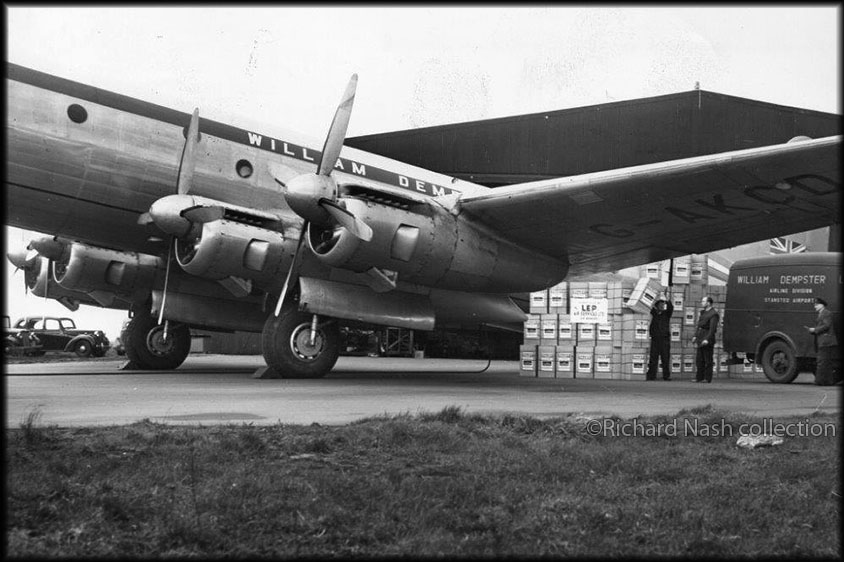
Found G-AKCD on this website: www.flywiththestars.co.uk/Pictures/Aircraft/aircraft.htm but is only partially
visible and has "B.S.A.A." and "Star Eagle"-titles. British South American Airways has a Wikipedia page.
On another website (aflyinghistory.com) I found more info on this Avro Tudor Mk.V G-AKCD:
Avro Tudor Vs were built for BSAA but never used as passenger airliners. Refitted as fuel tankers and
used on the Berlin Airlift. G-AKCD was sold to William Dempster Ltd. and flown by them from 1950 to 1954."

The illustrious Silver City Airways, its Bristol Freighter unloading at Sunlight Wharf (circa 1958)
Silver City Airways was a private, British independent airline formed in 1946. It was initially based at Langley Aerodrome, later at Blackbushe airport. In 1953, Silver City took delivery of its first Bristol Superfreighter. Unsustainable losses as a result of the loss of the Libyan oil industry support flight contract, increasing competition from roll-on/roll-off ferries and the lack of suitable replacements for the ageing Bristol Freighters resulted in growing financial difficulties, culminating in Silver City's takeover by British United Airways (BUA) holding company Air Holdings in 1962. This airline operated a great variety of aircraft but for the sake of this photo I like to list the Bristol Freighters here: |

DC-3 being loaded with cargo, livestock in front of a surplus of Dakotas.
Besides flying instruction (also at Perth and Shoreham) the company undertook aircraft maintenance and its first air transport experience came in 1932 in Egypt, when it helped set up an airline which is now known as.. Egypt Air!
In 1933 Airwork helped to set up Indian National Airways.
During WW2 Airwork helped to train the Royal Air Force but when the war ended they returned to commercial aviation.In 1946 a fleet of Dragon Rapides and Vikings was acquired.
In 1950 cariied its 10.000th passenger on the service between Wadi Halfa & Khartoum - London.
During 1948 Airwork formed a subsidiary company in East Africa named Airwork (East Africa) Ltd with its Hq in Nairobi.
Airwork flew 74 sorties for the Berlin Airlift.
Airwork continued its contracts for the military and on governmental contracts. In 1952 4 Handley Page Hermes aircraft were purchased from B.O.A.C. for trooping flights to Kenya and the Egyptian Canal Zone.
By 1954 Airwork's shareholders included the Blue Star Line and the Furness Whithy Line, both large shipping companies.
In 1953 Airwork acquired the rights to operate cargo flights from the UK to Montreal and New York. For this two Transocean Douglas DC-4 were leased. The inaugural flight departed London Heathrow on 01Mar1955. But after 9 months these services were suspended. An initial order for two DC-6A's was subsequently cancelled as these were meant to replace the DC-4s.
1956 was a year of consolidation and the fleet consisted mainly of the Hermes for trooping contracts.
During 1958 Viscounts replaced the aging Vikings. The Viscount operated the service between the Uk and Khartoum, Sudan via Rome, Athens & Cairo.
During 1959 the trooping contracts decreased and the Hermes aircraft were sold or scrapped.
On 01Jul1960 Airwork merged with Hunting-Clan and Air Charter to form British United Airways.
Source: 'British Independent Airlines 1946 - 1976', by A.C. 'Tony' Merton Jones - The Aviation Hobby Shop (tahs), 2000.



